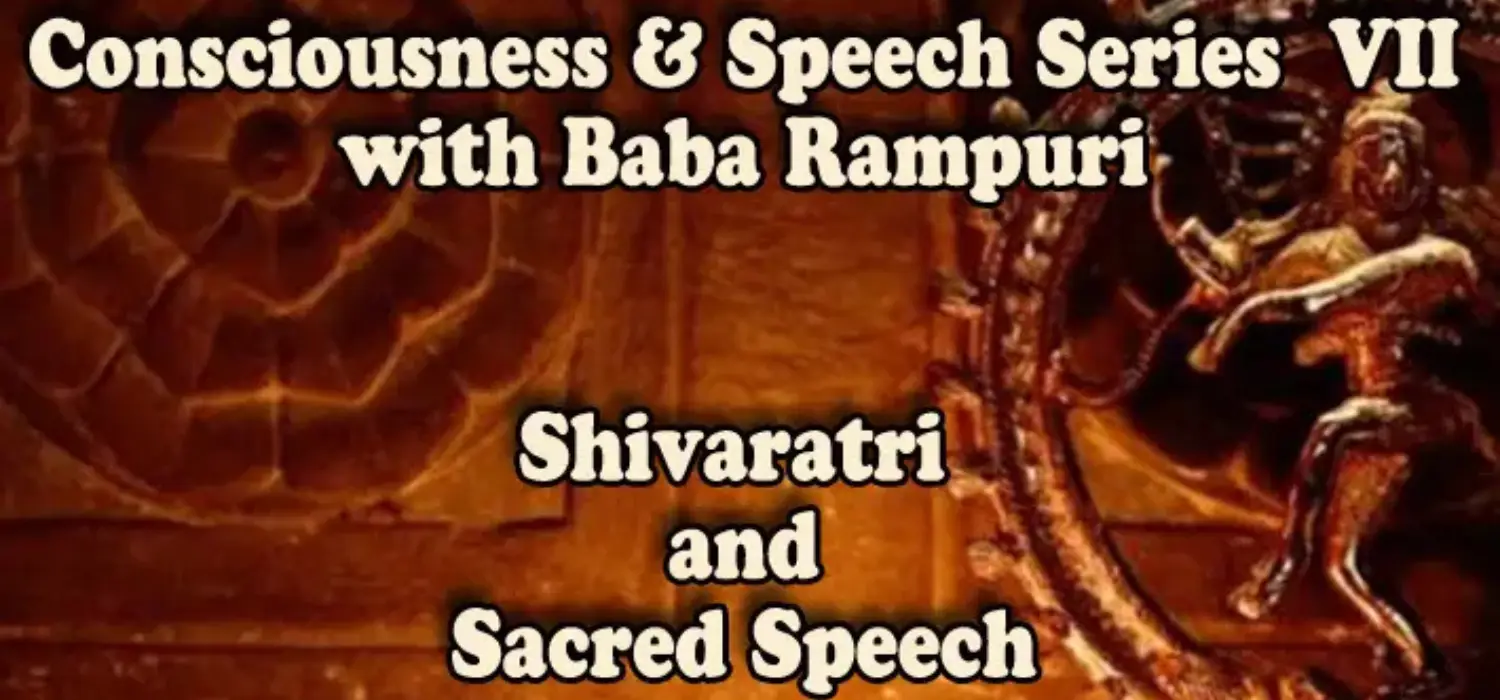
Shiva – His Drum of Consciousness, part 3
Sacred Speech Masterclass episode VII
part 1 of 6 parts
hosted by Baba Rampuri
![]()
Shiva’s Damaru
… we are not dealing with letters any more. We’re dealing with spaces and places of articulation.
![]()

![]()
We have have 5 vargas. We have 5 stations like we discussed last week. We have a Ka varga, which is at the back of our throat. We have a Ca varga, which is one position up. We have a Ta varga, which is a further postion up, and in the Ta varga, as I wrote, your tongue just goes straight up, and touches the middle of the roof of your mouth. We have a Ta varga where your tongue touches your teeth, and we have a Pa varga. Inside of those vargas, we start out with a simple striking, such as “Ka.” The second member of the varga is an aspiration, so we have “Kha.” “Ka.” “Kha.” The third member is an expansion of the throat, you are saying the same thing, but now you are expanding your throat, and “Ka” becomes “Ga.” The fourth is an expansion of the throat plus aspiration, which becomes, “Gha.” And then the fifth member of each of the five vargas is the nasal, which means that we reroute the articulation through our nose instead of through our mouth. So the fifth nasal in the Ka varga becomes “na.” The nasals can be a little bit tricky because—especially for English speakers, I don’t know about Nowegian speakers or German speakers, or Slavic speakers, but we have five nasals therefore in this system of speech. “na,” “na,” “na,” “na” and “ma”. And so you see that that the sounds are almost identical, and you probably have difficultly identifying one nasal from the other, with the exception of “ma,” because you are used to a letter that we will call, “n,” we are not dealing with a letter any more. We’re dealing with spaces and places of articulation.
Now. We have after—we have 25 consonants now that will have five members each in each of five vargas or stations. That’s 25. Then we have a very interesting set of four consonants, which we will discuss esoterically later as a part of Patanjali’s Yoga Sutra. And these are called the antahshta consonants. These are what you could describe as semi-vowels. We discussed this briefly last time. “Ya,” which relates to the vowel, “i”. Right? If we put “i” before “a,” it comes out “ya.” We have a “Ra” which is a consonant and a vowel, and there is a vocalic “L”, “la,” however, the vocalic “L” is never, I am not aware of really any use of any actual usage of anymore in Speech for the vocalic “L” but it’s used as a place keeper, “Ya,” “Ra,” “La,” and “Wa.” And, as we discovered in our last session, that “Wa” is a condenced form of “u.”